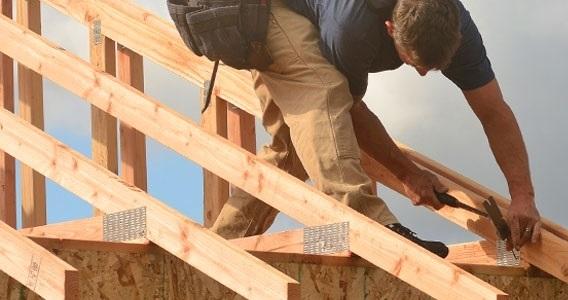With the diversity of types of wood and the fact that not every country produces every type of wood, the global trade of timber is a huge and necessary business. But not all wood – nor import policy – is alike, making cross-border trade somewhat of a challenge. A range of ISO standards aim to help.
Lumber, or sawn timber, is often the material of choice for construction because of its diversity of properties, and, if sustainably managed, is environmentally friendly. But international trade of lumber has its difficulties due to a lack of classification systems that are universal to all. And so the ISO technical committee on timber structures (ISO/TC 165), drawing on the input of experts from over 60 countries, for the most part in timber-producing and -consuming regions, developed a suite of International Standards that help reduce these barriers to trade by producing standardized frameworks and ways of working that can be used by everyone.
Why an international lumber classification system?
“One of the challenges within the industry is that there are hundreds, if not thousands, of timber species-grade designations, each with unique engineering properties, so choosing the most appropriate for a construction project is not easy,” said Erol Karacabeyli, Chair of ISO/TC 165.
“To address this ever increasing problem, Europe introduced a lumber classification system that required all lumber species-grade combinations to be categorized into about ten classes. The European system, however, was not acceptable to the North American industry. But after years of work and negotiations, the committee was able to develop the framework for an international lumber classification system that is acceptable to all.”
What ISO standards for lumber?
The standards developed by ISO/TC 165 are designed, therefore, to address grading and testing of both visually and mechanically graded lumber and provide a framework for an international strength classification system for both softwood and hardwood lumber. These include:
ISO 9709, Structural timber – Visual strength grading – Basic principles
ISO 12122-1, Timber structures – Determination of characteristic values – Part 1: Basic requirements
ISO 12122-2, Timber structures – Determination of characteristic values – Part 2: Sawn timber
ISO 13912, Structural timber – Machine strength grading – Basic principles
ISO 13910, Timber structures – Strength graded timber – Test methods for structural properties
ISO 16598, Timber structures – Structural classification for sawn timber
ISO 18100, Timber structures – Finger-jointed timber – Manufacturing and production requirements*
*Under development
Towards international adoption
The real benefit of the standards will be realized when all countries adopt them nationally, and it is anticipated that ISO 16598 for the structural classification of sawn timber will eventually be adopted globally, facilitating the trade of thousands of types of softwood and hardwood lumber.
Looking forward
ISO/TC 165 also has a number of projects in the pipeline, including International Standards and related documents for:
Cross-laminated timber (CLT)
Vibration design method for timber floors
Shear connections for timber-concrete slabs, a hybrid system that gives designers new choice
A framework for self-drilling screws
Long-term structural performance of wood-based products
Yield point for connections in timber structures
Bamboo
Where would we be without wood? In 2015, humans consumed a whopping 310 million cubic meters of softwood lumber and 130 million cubic meters of hardwood lumber, totaling USD 129 billion. And the hunger for wood is increasing, with wooden buildings as high as 18 stories starting to pop up.
 Clare Naden is Communications & Campaigns Specialist with ISO, the International Organization for Standardization, the world’s largest developer of voluntary International Standards. ISO founded in 1947, and since then have published more than 21,000 International Standards covering almost all aspects of technology and business. Today it has members from 163 countries and about 150 people work full time for ISO's Central Secretariat in Geneva, Switzerland. www.
Clare Naden is Communications & Campaigns Specialist with ISO, the International Organization for Standardization, the world’s largest developer of voluntary International Standards. ISO founded in 1947, and since then have published more than 21,000 International Standards covering almost all aspects of technology and business. Today it has members from 163 countries and about 150 people work full time for ISO's Central Secretariat in Geneva, Switzerland. www.
Where would we be without wood? In 2015 alone, we humans consumed a whopping 310 million cubic metres of softwood lumber and 130 million cubic metres of hardwood lumber, totalling USD 129 billion. And the hunger for wood is increasing, with wooden buildings as high as 18 stories starting to pop up.
 Clare Naden is Communications & Campaigns Specialist with ISO, the International Organization for Standardization, the world’s largest developer of voluntary International Standards. ISO founded in 1947, and since then have published more than 21,000 International Standards covering almost all aspects of technology and business. Today it has members from 163 countries and about 150 people work full time for ISO's Central Secretariat in Geneva, Switzerland. www.
Clare Naden is Communications & Campaigns Specialist with ISO, the International Organization for Standardization, the world’s largest developer of voluntary International Standards. ISO founded in 1947, and since then have published more than 21,000 International Standards covering almost all aspects of technology and business. Today it has members from 163 countries and about 150 people work full time for ISO's Central Secretariat in Geneva, Switzerland. www.





Have something to say? Share your thoughts with us in the comments below.